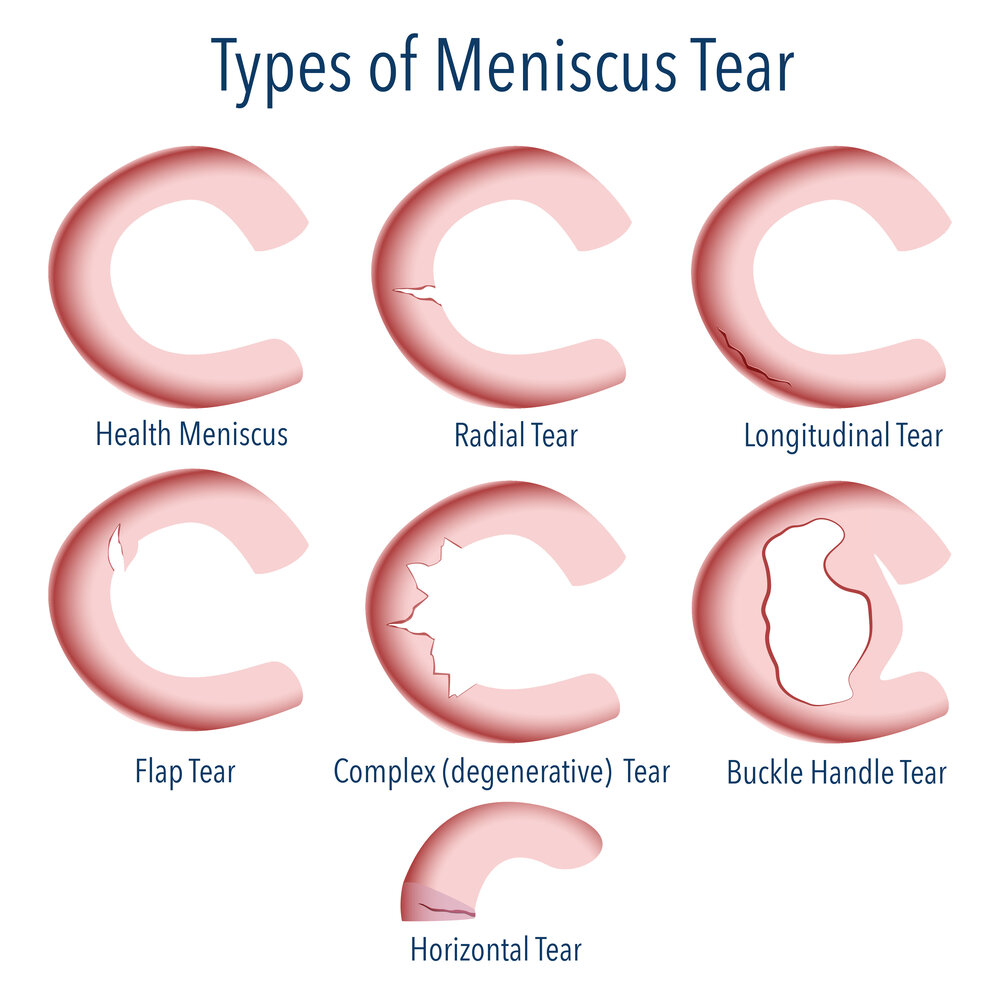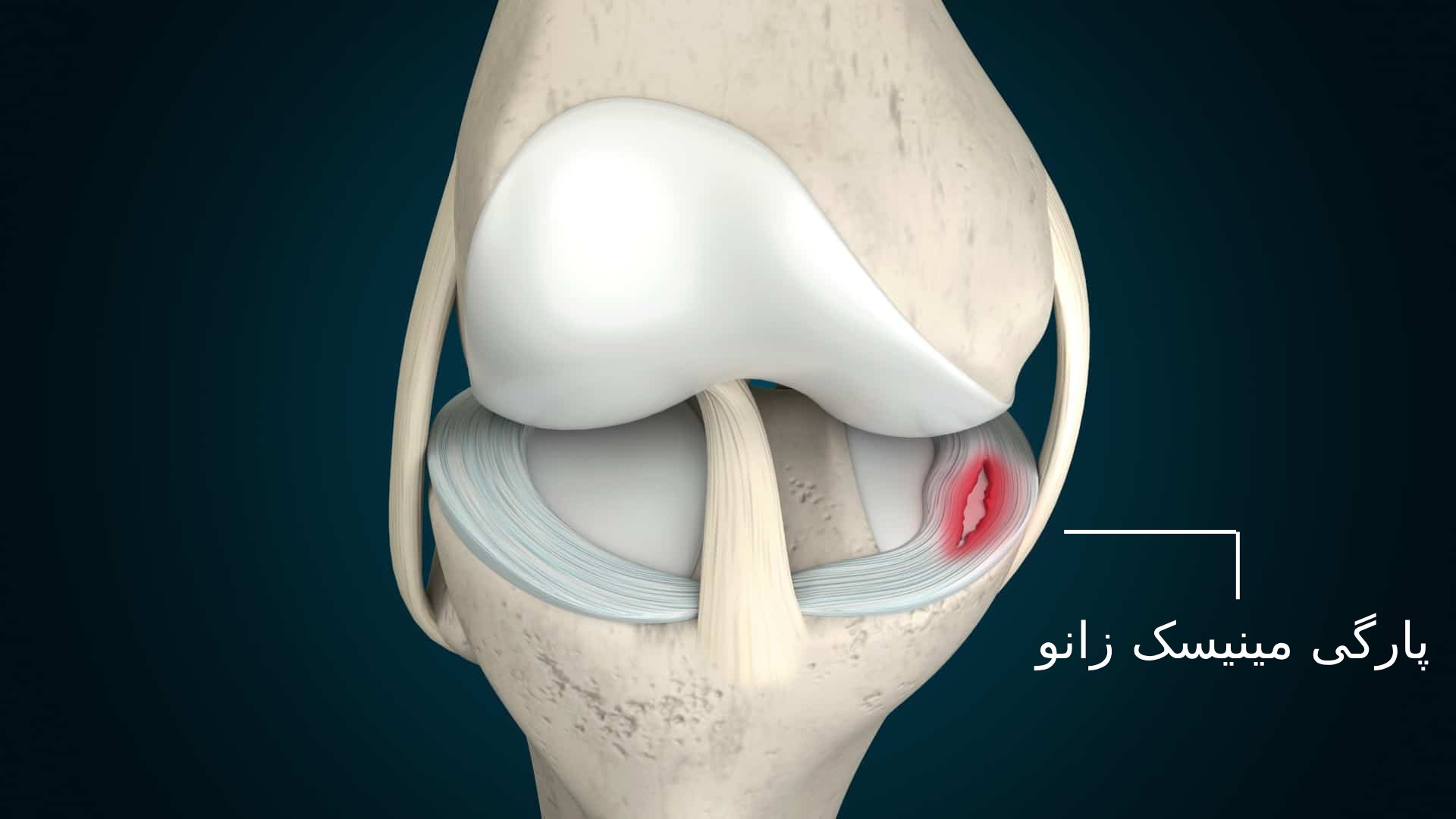Anatomy and Function of the Meniscus: Torn Meniscus

The meniscus is a C-shaped piece of cartilage that acts as a shock absorber and helps to stabilize the knee joint. It is located between the femur (thighbone) and the tibia (shinbone).
Structure and Location of the Meniscus
The meniscus is made up of two parts: the medial meniscus and the lateral meniscus. The medial meniscus is located on the inside of the knee joint, and the lateral meniscus is located on the outside of the knee joint. The menisci are attached to the tibial plateau by ligaments, which help to keep them in place. The meniscus is made of a type of cartilage called fibrocartilage, which is tough and resilient.
Role of the Meniscus in Knee Function
The meniscus plays an important role in the function of the knee joint. It helps to distribute weight evenly across the joint, absorb shock, and provide stability.
- Weight Distribution: The meniscus helps to distribute weight evenly across the knee joint. This helps to reduce stress on the cartilage and other tissues in the joint.
- Shock Absorption: The meniscus acts as a shock absorber, helping to protect the knee joint from impact forces.
- Joint Stability: The meniscus helps to stabilize the knee joint by providing a cushion between the femur and tibia.
Types of Meniscus Tears, Torn meniscus
A meniscus tear is a common injury that can occur due to a sudden twisting or impact force on the knee.
- Longitudinal Tear: This type of tear runs along the length of the meniscus.
- Transverse Tear: This type of tear runs across the width of the meniscus.
- Radial Tear: This type of tear runs from the outer edge of the meniscus to the inner edge.
Causes and Symptoms of a Torn Meniscus

The meniscus is a C-shaped piece of cartilage that acts as a shock absorber between your thighbone (femur) and shinbone (tibia). It helps to distribute weight evenly and protect the joint. A torn meniscus occurs when this cartilage is damaged. This can happen due to a sudden injury, or gradually over time.
Causes of a Torn Meniscus
The most common cause of a torn meniscus is a sudden injury, such as a twisting or pivoting motion. This is often seen in athletes who participate in sports that involve a lot of running, jumping, or pivoting. The meniscus can also be torn by a direct blow to the knee, or by a fall.
- Sports Injuries: Athletes in sports that involve a lot of pivoting, jumping, or twisting, such as football, basketball, soccer, and tennis, are at a higher risk of a torn meniscus. This is because these activities place a lot of stress on the knee joint.
- Age-Related Degeneration: As we age, the meniscus can become thinner and weaker, making it more susceptible to tears. This is because the cartilage in the meniscus can wear down over time.
- Trauma: A direct blow to the knee, such as a fall or a car accident, can also cause a torn meniscus. This type of injury can occur at any age, but it is more common in younger people.
Symptoms of a Torn Meniscus
The symptoms of a torn meniscus can vary depending on the severity of the tear. Some people may experience only mild symptoms, while others may have severe pain and difficulty walking.
- Pain: This is the most common symptom of a torn meniscus. The pain may be sharp and sudden, or it may be a dull ache that gets worse with activity.
- Swelling: The knee may swell after a torn meniscus. This is because the tear can cause bleeding into the joint.
- Clicking or Popping: You may hear a clicking or popping sound in your knee when you move it. This is caused by the torn meniscus moving around in the joint.
- Locking: Your knee may lock or catch, making it difficult to straighten or bend. This is because the torn meniscus may be blocking the movement of the joint.
- Instability: Your knee may feel unstable or like it is going to give way. This is because the torn meniscus is no longer helping to stabilize the joint.
Factors Influencing Symptom Severity
The severity of the symptoms can vary depending on a number of factors, including:
- The location of the tear: Tears in the outer portion of the meniscus are often less painful and easier to treat than tears in the inner portion.
- The size of the tear: Larger tears are more likely to cause pain and instability.
- The type of tear: Some tears are more likely to cause symptoms than others.
- Your activity level: People who are more active are more likely to experience symptoms from a torn meniscus.
- Your age: Older adults may be more likely to experience symptoms from a torn meniscus because their menisci are more likely to be worn down.
Diagnosis and Treatment Options
:max_bytes(150000):strip_icc()/meniscusfinal-01-5c8fba21c9e77c00010e96f5.png)
Once your doctor suspects a torn meniscus, they’ll conduct a thorough evaluation to confirm the diagnosis and determine the severity of the tear. This process involves a combination of physical examination, imaging tests, and, in some cases, a minimally invasive procedure called arthroscopy.
Diagnostic Methods
Diagnosing a torn meniscus usually involves a combination of:
- Physical Examination: Your doctor will ask about your symptoms, how the injury occurred, and your medical history. They’ll then perform a physical exam to assess your range of motion, tenderness, and stability of your knee joint. Certain maneuvers, like the McMurray test, can help identify a torn meniscus by eliciting a clicking or popping sound in the knee.
- Imaging Tests:
- X-rays: While X-rays can rule out other conditions like fractures, they don’t always show a torn meniscus.
- MRI (Magnetic Resonance Imaging): MRI is the gold standard for diagnosing a torn meniscus. It provides detailed images of the soft tissues in your knee, including the meniscus, allowing your doctor to see the location, size, and severity of the tear.
- Arthroscopy: This minimally invasive procedure involves inserting a small camera and surgical instruments into the knee joint. Arthroscopy can provide a direct view of the meniscus, allowing your doctor to confirm the diagnosis, assess the severity of the tear, and perform any necessary repairs.
Treatment Options
The treatment for a torn meniscus depends on the severity of the tear, your age, activity level, and overall health.
- Conservative Management:
- RICE (Rest, Ice, Compression, Elevation): This initial approach helps reduce pain, inflammation, and swelling.
- Pain Medication: Over-the-counter pain relievers like ibuprofen or acetaminophen can help manage pain. In some cases, your doctor may prescribe stronger pain medication.
- Physical Therapy: Physical therapy exercises strengthen the muscles surrounding the knee, improve range of motion, and help you regain stability and function.
- Surgical Intervention:
- Arthroscopic Repair: This procedure is used to repair a torn meniscus by stitching it back together. It’s typically performed for tears that are located in a stable part of the meniscus and haven’t been damaged too severely.
- Meniscectomy: This procedure involves removing the torn portion of the meniscus. It’s often recommended for tears that are located in an unstable area of the meniscus or have been severely damaged.
Comparing Treatment Approaches
| Treatment Approach | Advantages | Disadvantages |
|---|---|---|
| Conservative Management |
|
|
| Surgical Intervention |
|
|
A torn meniscus, that frustratingly familiar ache in the knee, can sideline athletes of all levels. The pain can be debilitating, and recovery can be a long and arduous journey. The jj mcarthy injury is a stark reminder of how a torn meniscus can impact even the most talented players, forcing them to fight their way back to the field.
Whether it’s a professional athlete or a weekend warrior, the road to recovery from a torn meniscus is a testament to resilience and the dedication to return to the game they love.
The knee, a marvel of engineering, can sometimes falter. A common culprit? A torn meniscus, a C-shaped piece of cartilage that cushions the joint. When this vital piece tears, it can cause pain, swelling, and limited mobility. Understanding the intricacies of this injury, and how to manage it, is crucial.
For more information on the torn meniscus , its causes, and treatment options, explore this helpful resource.
